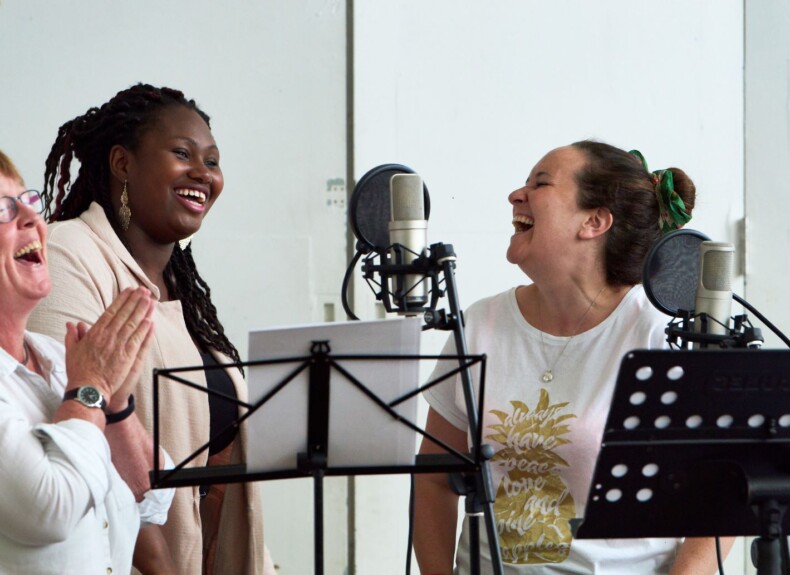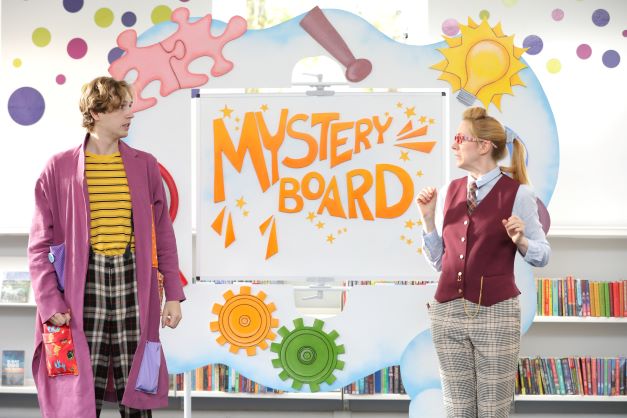Poverty Proofing:
Addressing the connection between poverty and participation with cultural organisations
Saffia Solomon from Children North East shares the importance of removing barriers so creativity and culture is available for everyone. Saffia shares experiences of working with organisations to ‘Poverty Proof’ their activities, as well as top tips for reflecting on your organisation’s strategy to engage communities.
Do you remember the first time you visited a museum or gallery? For some people, it might be so early in childhood that they can barely picture the experience. For others, it could have been a school trip filled with anticipation and excitement to be out of the classroom for a day.
Visiting cultural venues, especially when we are young, offers the opportunity to discover, learn and play, whomever we are. Yet, our circumstances still determine how much we connect with these spaces, with the amount people engage with cultural organisations in their life typically aligning with their financial background and circumstance.
Going back to those early memories of visiting cultural venues, imagine if your memory is of a venue that you didn’t feel you fit into, didn’t connect with, or felt somehow judged. How would that make you reflect upon opportunities to visit other settings in the future?
One in five people in the UK lives in poverty, including one in three children, and over half of adults living in poverty are working. [1] Living in poverty can often create invisible barriers to engaging with experiences and activities, including within the arts, culture and heritage sector, and develop a sense of stigma that can diminish a person’s sense of belonging. These are rarely intended but can often arise through a lack of understanding of the specific challenges faced by people living in poverty at that time, in that place.
“One in five people in the UK lives in poverty, including one in three children, and over half of adults living in poverty are working.”

Poverty Proofing© is a service developed by the charity Children North East. It supports cultural organisations to hear the voices of people in their communities living in poverty and make changes that create a more inclusive experience for individuals living on low incomes. It includes auditing the activities and venues visited by children and families and understanding their experiences by consulting with families to ensure their voices feed into decisions made my senior leaders. Coupled with unique training on the experience of living in poverty today, staff at cultural organisations become equipped to notice and challenge barriers experienced by those living in poverty.
In this blog, I will share some of my experiences of working with organisations to ‘Poverty Proof’ their activities, as well as some top tips for reflecting on your organisation’s strategy to engage communities.
What is Poverty Proofing?
Poverty Proofing© began in 2011 when our charity gave 1,000 young people disposable cameras and asked them to snap pictures of what poverty looked like to them (you can see an article from 2011 featuring a selection of the images here). We reflected on the photos and realised that many of the images depicted things that there could be simple solutions for, if only people with the power to act knew about the problems that those on low-incomes were facing. Our Poverty Proofing© Service was born and, starting with schools, we grew the programme into a nationally recognised programme, removing barriers for people living in poverty.
In our work speaking with tens of thousands of individuals each year, we have heard about the many ways in which people from low-income backgrounds encounter challenges, which have developed our understanding of poverty as a consequence of the structures and inequalities in society rather than individual choice or behaviours. That is a source of hope. Structures can be changed at scale and, once you can see these hidden barriers, simple solutions can often be found.
“…our charity gave 1,000 young people disposable cameras and asked them to snap pictures of what poverty looked like to them…”
How can Poverty Proofing help the Cultural Sector?
It is important to start by highlighting that Poverty Proofing© is not about altering the business model of an organisation, but rather making space to immerse teams in the audience’s experience and asking the right questions. Questions such as ‘what are the entry points to participation? How does an environment make a person with limited resources feel?
The process can have significant benefits for organisations that take part. For example, it is no secret that a person’s participation in cultural experiences is significantly impacted by their financial circumstances [2]. By identifying previously hidden barriers to participation, organisations can grow their audiences, improve engagement with the communities they serve and, in the case of that child on a school trip, nurture more positive experiences of culture, which they will carry for the rest of their lives.
Other benefits include supporting greater diversity among staff, freelancers and volunteers, as well as demonstrating values and social action to funders and collaborators.
Those organisations who have utilised the team’s services, which include Sage Gateshead, BALTIC and Group for Education in Museums North East, have reported it as deeply connected to their missions to reach people with art and cultural experiences.
Could your organisation be part of the change?
If we want to create a world that is inclusive to everyone, regardless of financial background, we must start by listening to the people who are often left out. We believe that there is a huge opportunity for cultural organisations to be at the forefront of social change and unlock best practice and new opportunities for the next generations of creatives, learners, thinkers and dreamers.

Some top tips for thinking like a Poverty Proofer
- Is there a place for families to eat lunch if they bring food prepared at home, so they don’t have to plan a visit around mealtimes or leave if the kids get hungry (unlike people who can pop into the café if needed)?
- If exhibition guides are paid for, do you have a handful available on site for people to look at in the space? Think about how these are accessed, for example, if copies are attached to a wall this may feel stigmatising. A comfortable reading space would promote a more positive experience.
- Do you include local public transport links and maps showing the route from the nearest stops on your website? Some venues might go a step further and offer discounts to those using public transport, supporting sustainability and offering a subtle way to reduce costs for lower-income visitors.

If you’d like to learn more
If you are interested in learning more about Children North East’s Poverty Proofing© services and how they can help you achieve your goals for inclusive, accessible services and activities, you can visit their website or get in touch with Development Manager Saffia Solomon at saffia.solomon@children-ne.org.uk.
06 July 2022
USEFUL LINKS

Saffia Solomon is the Development Team Manager for Youth Services and Poverty Proofing© at Children North East.
Children North East exists because growing up can be hard. They work with babies, children and young people in their families, schools and communities to ensure they grow up to be healthy and happy.




